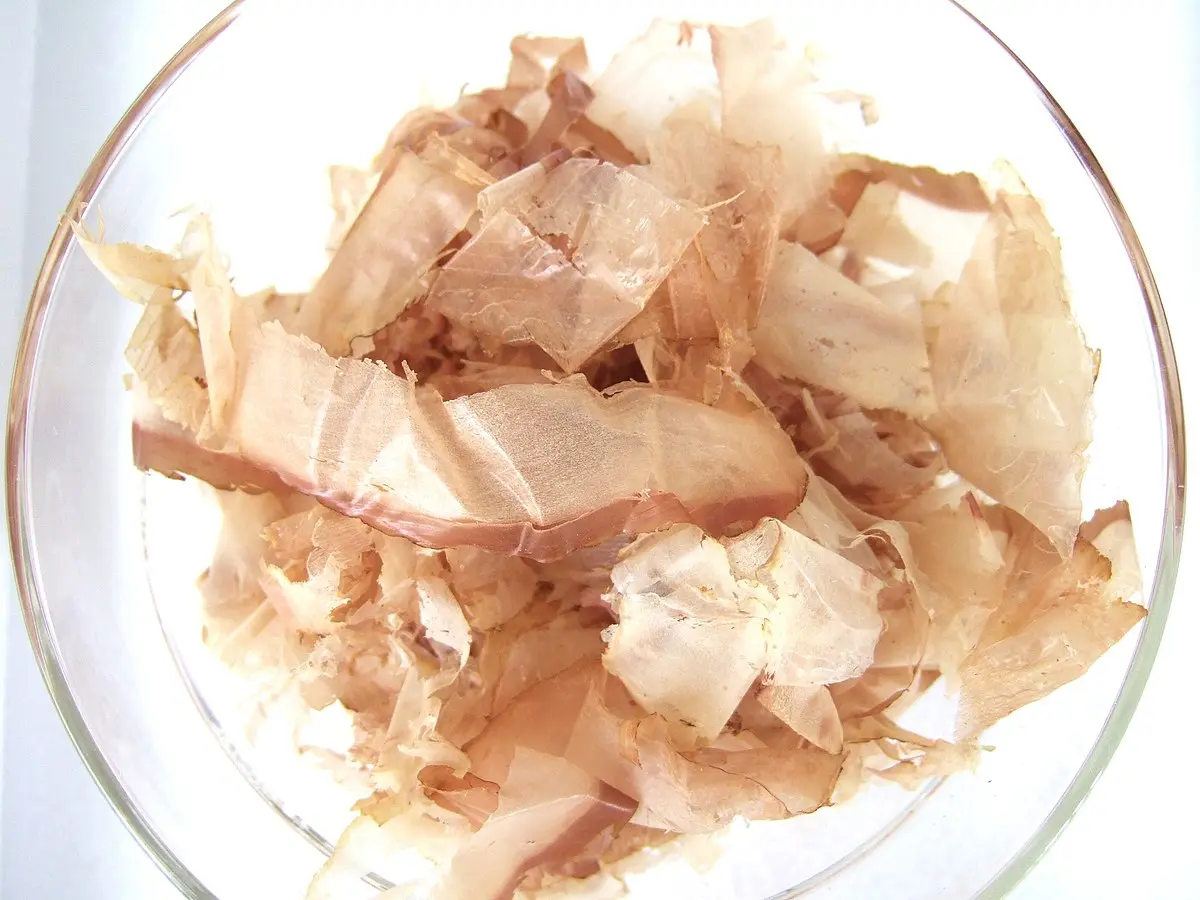Japanese cuisine is known for its precision and attention to detail, and one culinary tradition that exemplifies this is the art of smoking fish. Japanese smoked fish, also known as katsuobushi or bonito flakes, is a popular ingredient used in many traditional dishes. In this article, we will explore the production methods, the history behind the name bonito, the significance of fish flakes in Japanese cuisine, and the differences between katsuobushi and bonito flakes.

Production Methods
There are three main methods for producing smoked fish in Japan: cold-smoking, hot-smoking, and seasoning and hot-smoking.
Cold-Smoking
Cold-smoking is a production method aimed at preserving food for a longer period. The process involves pretreating the food, salting, desalting, air-drying, and smoke-drying. The temperature during smoke-drying is maintained between 15 and 30°C, and the process can take anywhere from 1 to 3 weeks. Cold-smoked products have a longer shelf life but tend to have a harder texture due to the low moisture content.
Hot-Smoking
Hot-smoking is a production method used to season the food. The process is similar to cold-smoking in terms of pretreatment and smoke-drying. However, the smoke-drying temperature is higher, ranging from 30 to 80°C, and the smoking period is shorter, typically lasting 1 to 6 hours. Hot-smoked products have a higher moisture content, resulting in a shorter shelf life. However, they have a unique flavor and a softer texture compared to cold-smoked products.
Seasoning and Hot-Smoking
Seasoning and hot-smoking follow the same process as hot-smoking, but the food is seasoned before the smoke-drying process. This additional step enhances the umami of the ingredients and intensifies the flavor produced by smoke-drying, resulting in a tastier final product.
Why is it called Bonito?
Bonito is a term used to refer to a tribe of medium-sized, ray-finned predatory fish in the Scombridae family, which includes mackerel, tuna, and Spanish mackerel. The name bonito comes from the Spanish word for pretty. However, the origin of the noun referring to the fish is unclear, although it is thought to be related to the Greek word byza, meaning owl.

What are Fish Flakes in Japanese Cuisine?
In Japanese cuisine, fish flakes, known as katsuobushi or bonito flakes, play a significant role. Katsuobushi is made from simmered, smoked, and fermented skipjack tuna. It is also referred to as bonito flakes or okaka. The distinct umami taste of katsuobushi comes from its high inosinic acid content.
Katsuobushi is a key ingredient in dashi, a broth used as the base for many Japanese soups and sauces. It is made by shaving thin pieces of katsuobushi and combining them with dried kelp (kombu). The combination of these two ingredients creates a flavorful and aromatic broth.
Traditionally, katsuobushi is made by filleting the fish, simmering it, smoking it using specific types of wood, and allowing it to sun-dry with the assistance of mold. This process results in a dry and hard fish fillet that can be shaved into delicate flakes.
Katsuobushi vs. Bonito Flakes
While katsuobushi and bonito flakes are often used interchangeably, there are some differences between the two. Katsuobushi refers specifically to the dried, fermented, and smoked skipjack tuna, while bonito flakes can also include other types of fish flakes.
In terms of usage, katsuobushi is favored for making dashi stock due to its larger, thicker flakes. On the other hand, smaller and thinner flakes, known as hanakatsuo, are often used as a flavoring and topping for various dishes, such as okonomiyaki.
In Conclusion
Japanese smoked fish, known as katsuobushi or bonito flakes, is an integral part of Japanese cuisine. The production methods, the history behind the name bonito, the significance of fish flakes in Japanese cuisine, and the differences between katsuobushi and bonito flakes all contribute to the rich culinary tradition of Japan. Whether used as a key ingredient in dashi or as a flavorful topping, Japanese smoked fish adds a unique and delightful taste to many dishes.
If you want to know other articles similar to The art of japanese smoked fish: a delicate tradition you can visit the Smoked fish category.


Related Articles